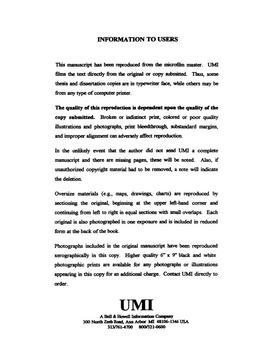| dc.contributor.advisor | Matthews, William J., | en_US |
| dc.contributor.author | Gido, Keith Bryant. | en_US |
| dc.date.accessioned | 2013-08-16T12:30:29Z | |
| dc.date.available | 2013-08-16T12:30:29Z | |
| dc.date.issued | 1999 | en_US |
| dc.identifier.uri | https://hdl.handle.net/11244/5785 | |
| dc.description.abstract | I examined the potential effects of benthic omnivorous fishes in reservoir ecosystems. In the first chapter, I examined long-term changes in the total fish assemblage of Lake Texoma based on gill net sampling in 1954, 1981--84, and 1996--97. Assemblage structure was relatively stable across years as indicated by persistence of species, significant concordance in rank abundance, and overlapping sample scores in multivariate space. Regardless of these indices, several less common species have varied in abundance among decades. | en_US |
| dc.description.abstract | In the third chapter, I developed a model and a field experiment to further examine the effects of these three species on ecosystem properties. In the first experiment I modeled nutrient loading for the reservoir that could be attributed to fishes on the basis of mean excretion rates, estimates of standing crop, and diel patterns of foraging activity. Assuming a standing crop for the three species at 191.6 kg ha-1, phosphorous loading by these fishes was estimated at 9.60 g ha-1d -1, which exceeds external loading rates from the watershed during low inflow periods. In a field enclosure/exclosures experiment I found the exclusion of large fishes from foraging on benthic sediments significantly increased abundance of midge larvae (Chironomidae). However, in fish enclosures, only gizzard shad and smallmouth buffalo significantly depressed abundance of midges below that in exclosures; river carpsucker did not appear to affect midge abundance. Other sediment characteristics such as percent organic matter, algal abundance, and other macroinvertebrate abundances showed no significant differences among treatments. | en_US |
| dc.description.abstract | In the second chapter, I described the feeding ecology of three benthic omnivores: smallmouth buffalo (Ictiobus bubalus), river carpsucker (Carpiodes carpio), and gizzard shad (Dorosoma cepedianum ). Relative proportions of detritus and zooplankton in the diet varied among species. Smallmouth buffalo primarily ate copepods, gizzard shad primarily ate detritus, and river carpsucker diet was intermediate in relative proportions of zooplankton and detritus. Interspecific differences in content and nutritional value of the diet was correlated to spatial and temporal variation in invertebrate prey abundance. | en_US |
| dc.format.extent | xv, 123 leaves : | en_US |
| dc.subject | Biology, Zoology. | en_US |
| dc.subject | Biology, Ecology. | en_US |
| dc.subject | Agriculture, Fisheries and Aquaculture. | en_US |
| dc.subject | Fishes Seasonal distribution Texoma, Lake (Okla. and Tex.) | en_US |
| dc.title | Ecostystem effects of omnivorous fishes in Lake Texoma (Oklahoma-Texas). | en_US |
| dc.type | Thesis | en_US |
| dc.thesis.degree | Ph.D. | en_US |
| dc.thesis.degreeDiscipline | Department of Biology | en_US |
| dc.note | Major Adviser: William J. Matthews. | en_US |
| dc.note | Source: Dissertation Abstracts International, Volume: 60-04, Section: B, page: 1396. | en_US |
| ou.identifier | (UMI)AAI9925599 | en_US |
| ou.group | College of Arts and Sciences::Department of Biology | |
